Satoe Kasahara
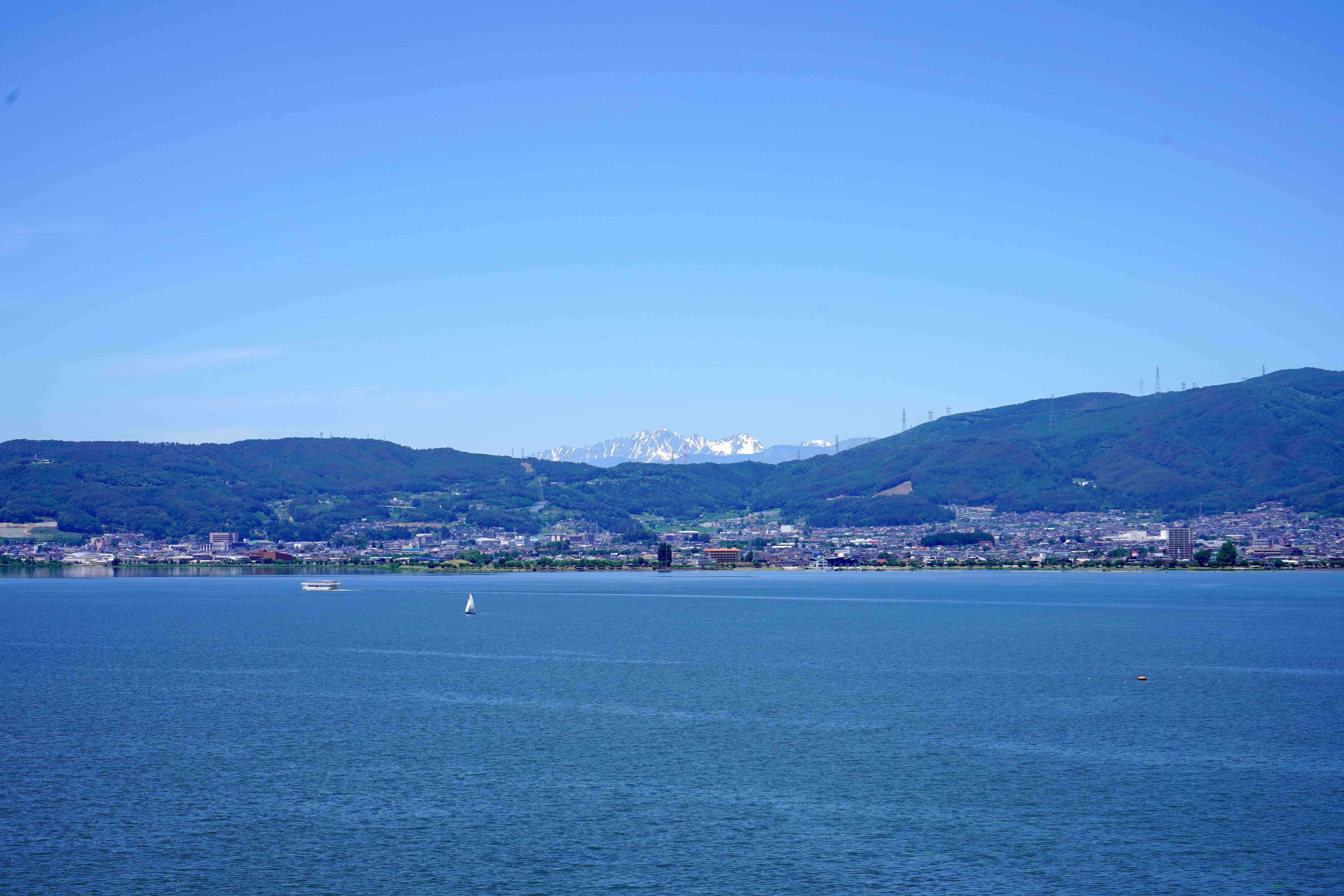
Suwa is a special place in Japan known for its mystical lake. Today, the lake is still with no waves. It looks as though a huge drop of water has fallen from the sky, creating the tranquil puddle. Mount Fuji can be seen from the shore of Lake Suwa, and the snow-capped Alps too, on the other side across from Mount Fuji. Professor Kasahara is a researcher who specializes in birds working at the Suwa Hydrobiological Station, Research and Education Center for Inlandwater and Highland Environments, of the Faculty of Science. It is a facility that students can use for training purposes accommodated with a place to stay overnight. She sat down for an interview shortly after having returned from Lake Suwa by boat for a routine water quality monitoring. Despite the busy morning Dr. Kasahara welcomed the interview with sweet cafe latte and got right down to the interview.
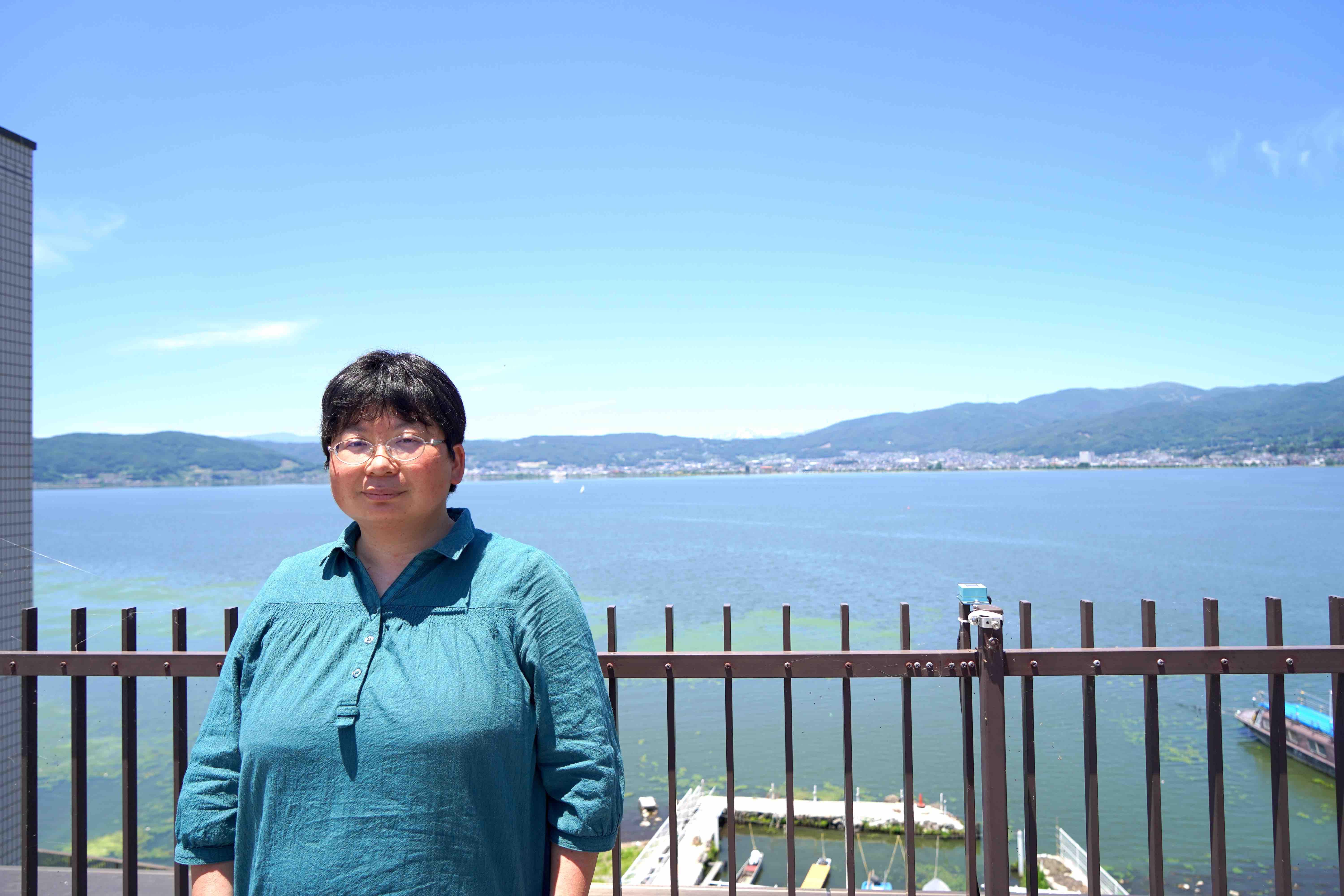
Can I ask why you decided to become a researcher?
Many bird researchers have observed birds and loved them since their childhood, but I started to become interested in birds only after I entered university. When I joined a club at university, there was a senior who taught me how to identify birds, and I was invited by that senior to join in observing birds, so I started observing birds.
It was a club activity at the university, but I was conducting a survey following the advice of my seniors, observing birds every week or two, and trying to summarize the results properly. There was a teacher who suggested that I try to write a graduation thesis about birds using the data that I had collected when considering which laboratory to be assigned to for my graduation research, and I wrote the graduation thesis in that laboratory. It was after I entered the master's program that I became aware of the researcher as a profession. For the undergraduate research, I recorded the number of species and the number of individuals that appeared on the route set in the survey. I was thinking for the master's course I wanted to delve deeper into the life of birds, such as research on the ecology of birds like breeding strategies. The university I was attending at the time did not have a teacher specializing in birds. Shinshu University was the place where Professor Hiroshi Nakamura was in the Faculty of Education, so I went to his laboratory for the master's program.
Professor Nakamura places importance on fieldwork, and I think he has a sixth sense about nature. On top of that he has an outstanding sensibility as a researcher. Although he was strict and rigorous at times, he taught me many things. While conducting research activities under Professor Nakamura, I began to think that I would like to be more deeply involved in these things, while being aware of how I approach birds and nature and the sense of proximity to my subject of study. I started to think that way, especially since I started researching the river bird community, which is my research theme on the Chikuma River in Nagano Prefecture. In fact, I continue to study birds at the Chikuma River, almost 20 years after I did for my master's program.
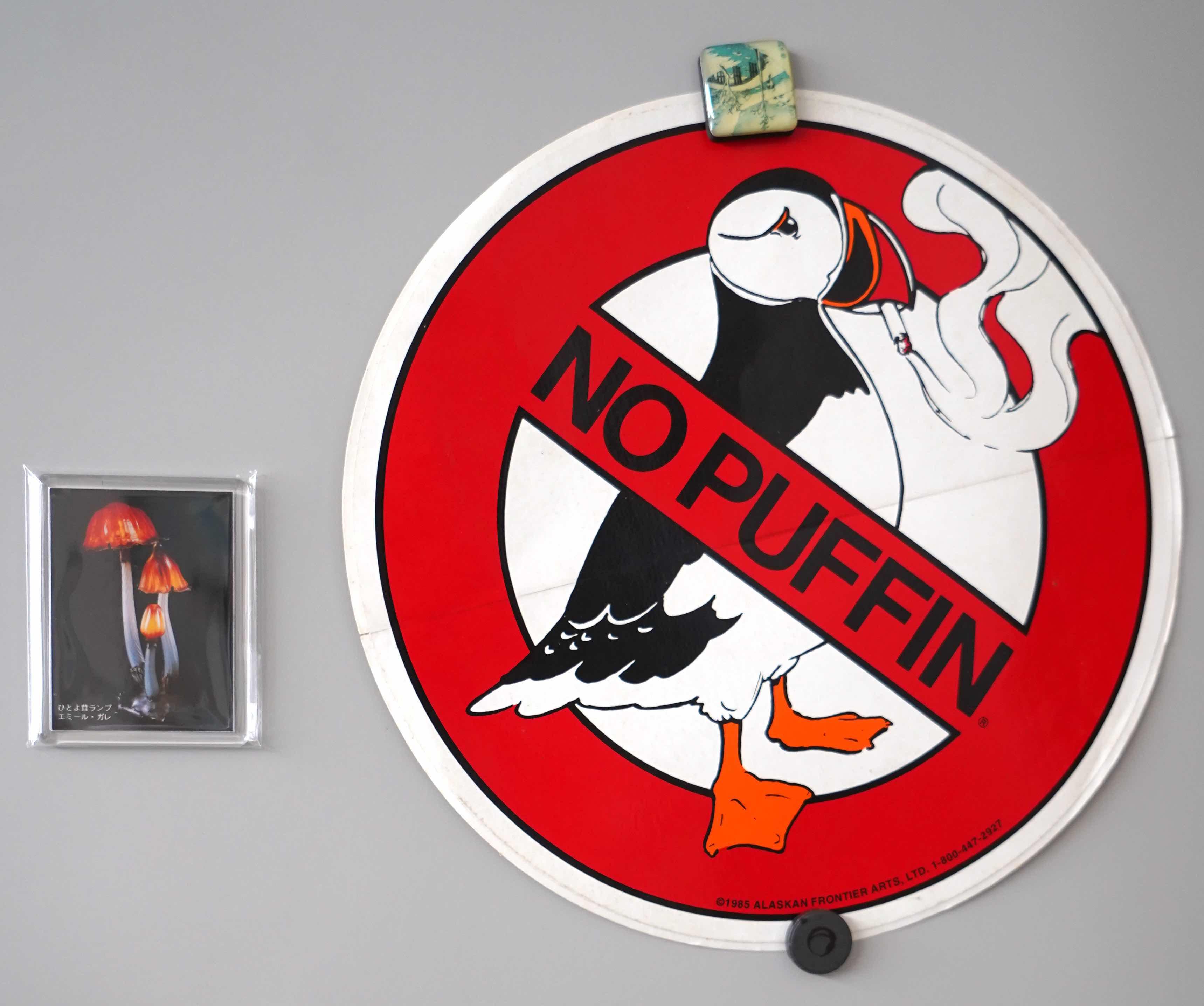
Rivers carry water, which is very important for human life. Therefore, rivers has been historically modified. River water has always been important as a source of drinking water for people and water for agriculture, but at the same time, it has flooded and killed people in the event of heavy rain or typhoons. The relationship between rivers and people is based on the idea of flood control, first of all, to build a dike or revetment so that the river will not overflow in order to protect people's lives. Secondly, rivers are utilized for agriculture and industry. However, the existence of other creatures around the river had not been considered. In 1997 the River Law was revised to amend that consideration to living things in river environments is necessary to the maintenance of rivers. Only then did we have to start thinking about the environment.
In the 1980s and 1990s, there was a global movement towards environmental conservation. The word "biodiversity" which is now commonly used, was born in the mid-1980s. It was at the 1992 Earth Summit that the Convention on Biological Diversity emerged which most countries have now joined. This kind of movement for the conservation of living creatures also affected river development, but those who have been involved in river development with an emphasis on flood control and water use for human beings did not know how they should consider other living things. I think that is why a group called the River Ecology Research Group formed. It is a group of researchers who study ecology and river engineering, who seem like they may have completely different views and opinions, and to learn more about rivers from various angles. The Chikuma River was the target of research along with the Tama River and Kizu River in the early days of the study group. When I joined Professor Nakamura's laboratory, Professor Nakamura was in charge of bird research at the Chikuma River Research Group. Therefore, my research started from the viewpoint of the relationship between the flooding that is an original characteristic of rivers and the living creatures that live there, and now includes how people interact with rivers, and how to manage rivers to take living things that depend on the river into consideration.
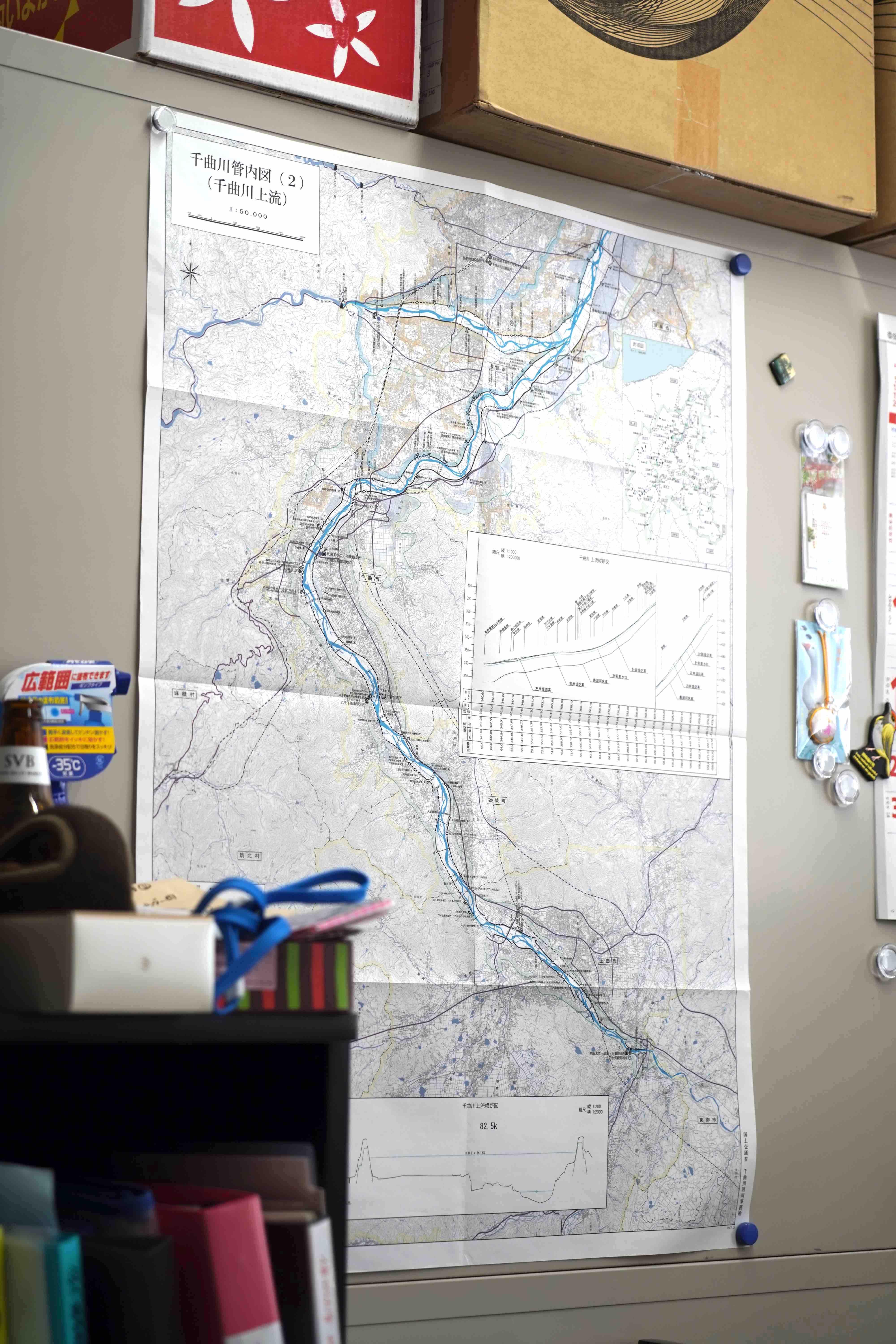
The Chikuma River is the longest river in Japan. The map of the Chikuma River on the wall in my laboratory is only the upper part of the Chikuma River. The Chikuma River originates from Kobushigatake, which is a mountain at the border between Saitama, Yamanashi, and Nagano Prefecture. When the Chikuma River enters Niigata, the name changes to the Shinano River. It has a total length of 367km until it flows into the Sea of Japan. The river is wide and the amount of water flowing is quite large, but despite this, there are not many large dams upstream. For example, in the Kanto region, the Tamagawa river has the Ogouchi dam, which is said to be the water supply of Tokyo, and the Kinugawa river has about three big dams upstream. The Chikuma River also has a dam in its tributary, but the mainstream is said to maintain a relatively natural flow regime.
I think that the Chikuma River is a very good river, because it is said that most rivers in the world have dams and the flow rate is regulated. However, this means that the river changes a lot, and you may remember that there was a big flood of the Chikuma River last year. The embankment that broke due to flooding in Nagano City was part of the study site and affected research activities. Such large floods have occurred frequently in the past. There have been big floods in 1995, 1998, 1999, 2004, and 2006.
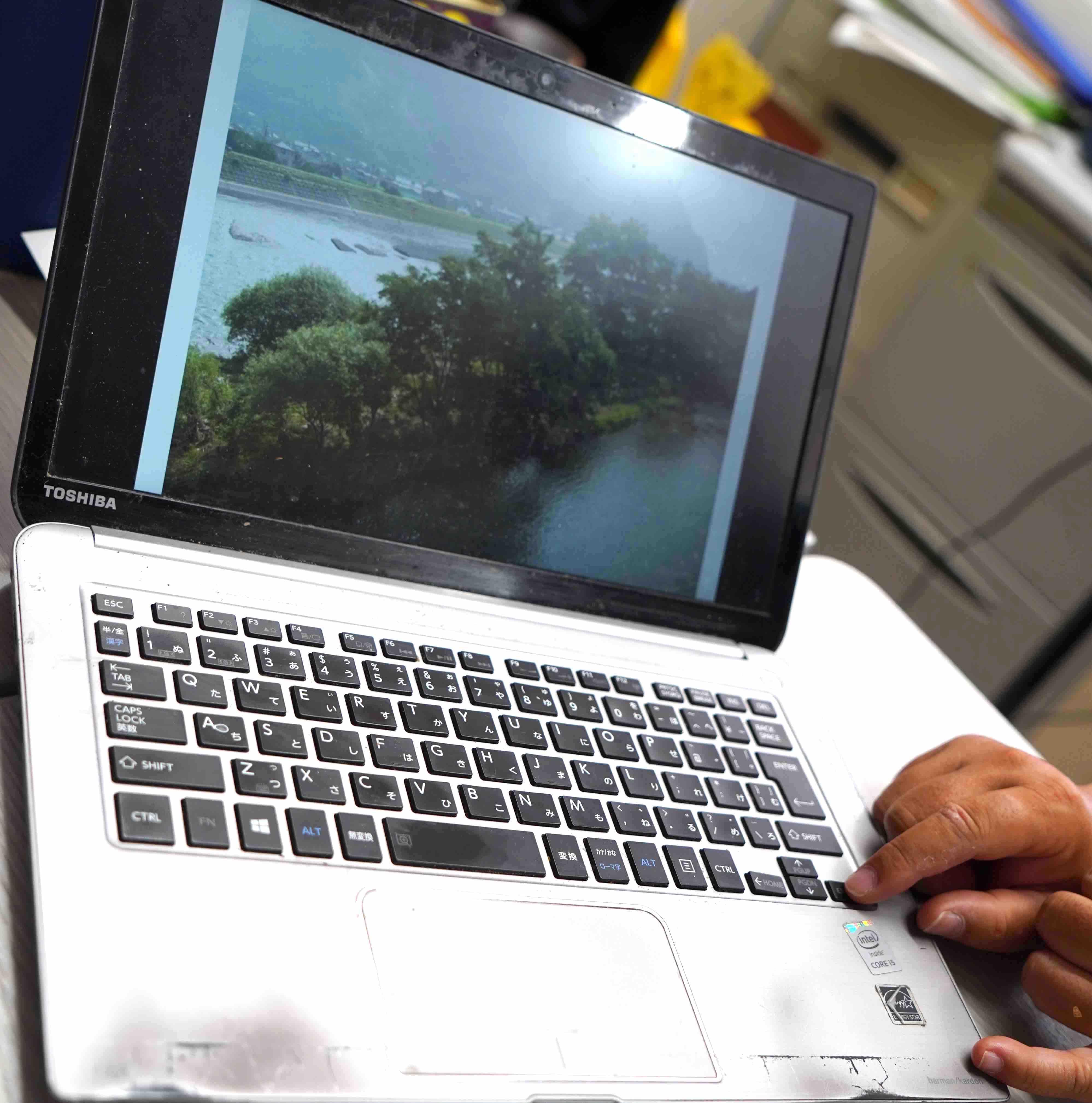
I would like to express my deepest sympathies to the victims. On the other hand, with rivers, variability is a big keyword. It's a shame that the farmers and the residents endured damage, but for the river, for there to be an increase in the flow, for the trees to be washed away, sediment carried from upstream, and a new gravel area to be created - I think that is one of the natural processes of the river. It is certain that the extremity of damage to people was a problem, but there are some birds that cannot live without such disturbances, and the little ringed plover and kingfisher are such birds.
The common sandpipers and plovers prefer gravel land where there is not much grass on the ground. There is no ground where grass does not grow, but it is difficult for humans to make an area of gravel land with grass growing very sparsely. When humans excavate a river, it may be possible to dig back and temporarily vacate the ground, but the plants are very robust, there are many seeds in the ground, and when the soil is stirred and the condition is ready, it will spring into action and germinate. The artificial excavating will cause grass to grow shortly thereafter, and it will not be possible for the small birds to breed. On the other hand, it takes time for grass to grow on gravel land formed by sediment brought by the flood. Although it depends on the scale of flooding, bare land, which is preferred by the sandpiper and the plover, will be maintained for a while. Flood damage is a huge problem for both humans and creatures in extreme weather conditions caused by recent climate change. I understand that it is a difficult issue, but I think it is necessary to have flooding within the range where people's livelihoods and river ecology can be maintained at the same time.
After finishing the master's course and proceeding to the doctoral course, I became interested in the habitat use of birds along the river and what they eat. For example, how do common kingfishers and the crested kingfishers decide what to eat? How about the relationship between nesting plants and the nesting time of the oriental reed warbler, or the bull-headed shrike whose nesting habitat changes according to the season? I observed many birds that live around rivers. After completing my doctoral course, I had a difficult time finding a permanent job. I worked as a postdoc at universities and worked as a researcher at NPOs. Whenever my workplace changed, such as in the Kanto region and Tohoku regions, I conducted bird surveys by the rivers around my workplace. The type of gravel and the ground varies depending on the river, so the bird species and numbers that can be observed were different, but the common feature of these locations were that they cannot be made by humans. I grew to understand that places where life by the river prefer to dwell is difficult to maintain.
Even while I lived away from Nagano prefecture, I continued research at the Chikuma River. Research on the Chikuma River was carried out as a group project by the Chikuma River Research Group, which was launched in collaboration with faculty at Shinshu University, researchers from other research institutions, and people from the Chikuma River Office. From what we have learned, efforts are being made to maintain the river ecosystem by utilizing the power of nature, that is, the power of floods, for control of alien species, and suppressing the growth of trees that become driftwood during flooding. I hope that this kind of river management with the help of nature will lead to the creation of rivers that are kind to the natural creatures that inhabit them.
I noticed you have a lot of fans on Twitter. Your research on the little ringed plover was also covered by many newspapers in Japan.
I was honestly surprised that the little ringed plover research was taken up by various media. The little ringed plover is a small brown bird, so I thought that common bird-watchers prefer and are interested in birds with beautiful colors like kingfishers. Even so, I think the reason why the media picked it up is that the migration of birds is a spectacle, to put it simply. They travel such long distances with their small body to raise children and spend winters. Even if we encounter an individual migratory bird somewhere, we know that it is a migratory bird but we do not know where it came from and what kind of journey it had or where it will go. I think migration is truly a mysterious and magnificent phenomenon. It may have been interesting to see that the migration route of the birds even a little, and there is concern that the number of plovers will decrease worldwide, so it was covered from the viewpoint of conservation.
I was curious how they fly that distance (round-trip 3000km-8000km) over the sea. Do birds eat when they fly over the sea?
It is said that the route of migratory birds differs depending on the type and age, but the little ringed plover we surveyed this time moved a little, took a break and ate, moved a little again, and progressed like stepping on stones. Some species, like the snipe, keep flying over the ocean for about a week. It is also known that some birds, depending on the species double their weight by accumulating fat before migration. I haven't looked into weight gain in this little plover study.
It is a study that expands the imagination.
Thank you very much. I have also begun studying the migration of little ringed plovers outside Nagano Prefecture. Nagano is located in the central part of Honshu, now I have just started a new study in Hokkaido. There are many migratory birds commonly seen in Honshu and Hokkaido, but the migration routes may actually be different. In a study on the small bird that live in the grasslands of Hokkaido and Honshu areas, called the Siberian Stonechat (Yamaura et al. 2016), it was revealed that the population that breeds in Hokkaido migrates soon after to the large Asian continent during the autumn migration. This bird also breeds in Honshu, so I thought that Hokkaido birds also pass through Honshu when migrating. In fact, Hokkaido's Siberian Stonechat migrate to the continent immediately on autumn migration and travel southward to the wintering areas of southern China and the Indochina Peninsula.
Considering that, our research found that the little ringed plover that breeds in Nagano Prefecture moves southward from Honshu and moves to the Philippines via Taiwan. However, perhaps birds in Hokkaido did not go through Honshu but travelled directly to the continent. Although they are of the same type and breed in Japan in the same way, their migration routes may differ depending on the region. I would like to research that. Although the little ringed plover move in Japan and other countries, some species in Japan move seasonally. For example, in heavy snowfall areas, the environment for eating in winter may decrease. Birds in such areas often move to warm areas in winter. We are starting our research by focusing on such birds that move seasonally in Japan.
When I hear you speak of the birds, I sense compassion you have of other living things. When you were conducting research on the route of the little ringed plover, you attached GPS to them. You were very concerned about the wellbeing of the birds.
The GPS attached to the little ringed plover weighs about 1 gram. This is the GPS we used, about 3.8% of the weight of the bird. Generally, in the world of ornithology there is a rule of keeping GPS trackers under 5% of the body weight. After attaching a GPS to the bird, I put the bird in a large box and observe it before releasing them back into the wild. If it seems too heavy, their walk would look strange, so I immediately remove the GPS from such individuals. The weight of the GPS attached to the little ringed plover is less than 4% of the weight. So, if you weigh the bird after capturing and it's too light, I don't put a GPS on them. 3.8% of the bodyweight doesn't seem too heavy for a human, but it's not a good idea to add strain to long-distance birds. The following year after installing the GPS, we recapture and remove the GPS. I walked around looking for birds in a much wider range than when I caught them in the previous year so that I would not miss finding them. After removing it the GPS, I look around and make sure they are okay, then I sigh a sigh of relief, "thank you for coming back alive!" I release the birds back saying don't let this experience keep you from coming back to the Chikuma River again, live a long life and return!
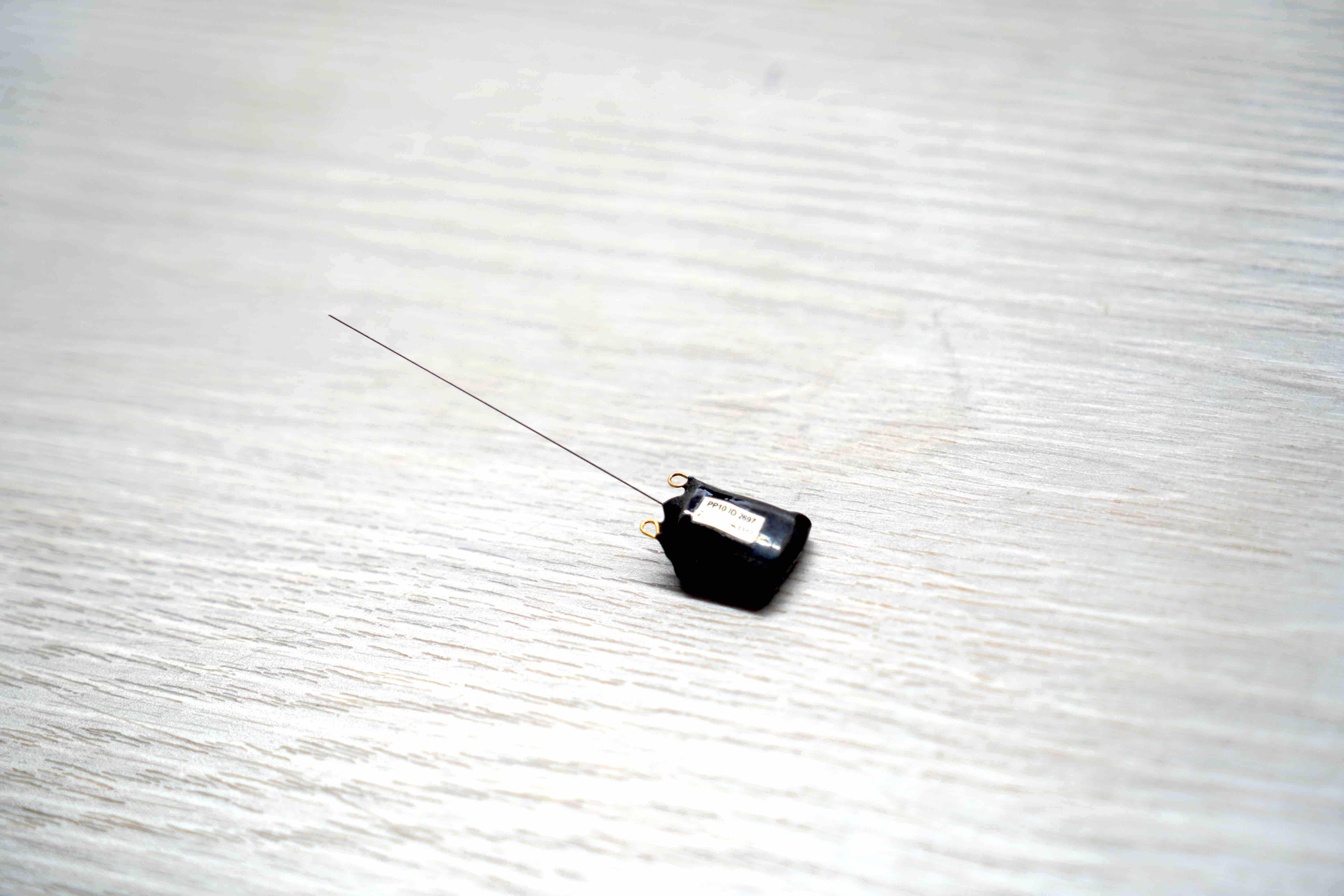
From previous studies it is known that about 30% of birds return to the same place the following year. How did you feel when you met the birds again?
I was very excited when I recaptured a bird with a GPS installed the second year of the study. Although I had data that the return rate of an individual wearing only coloring for identification was about 30%, but when the bird with the GPS came back, I was happy to be reunited but more than that, I was overjoyed that they had lived. Of course, there is the joy of being able to use the data of the migration route, but the joy that they had survived was greater. There is no device that is one hundred percent safe and secure. Even if I intend to put on the GPS so that it does not interfere with the movement of the birds, I do not know what kind of accident there could be during migration, and it will surely cause a burden. Therefore, when I reunited with a bird wearing a GPS, I felt relieved and excited. Birds molt in about a year, so during the GPS installation to recapture the next year, it is common for the GPS to become invisible. When I was able to recapture the first bird, I think my hands were shaking with excitement to check the GPS on the birds' back.
Research seems to require a lot of effort. What sort of difficulties do you come across?
Well, for example, if there is a large-scale water increase like last year, the river may change greatly, including the topography. For example, the arrangement of sand and gravel in a river may change or disappear. Due to topographic changes, the return rate of birds may change. Even if the birds return, the topographical changes may keep me from getting closer to where they are breeding. Even if there is no flooding, the same issue occasionally arise when areas renovate or excavate rivers.
Also, there are times when it is difficult to capture birds. They are generally more cautious when they are being recaptured than when they are first captured. Although the little ringed plover is a very small bird weighing around 40 grams, they remember that something happened to them that they did not enjoy a year ago, so it will not easily approach the same trap. I want to avoid the effect on reproduction as much as possible, but I also want data, and that is the point of ingenuity. I have to be smarter than a bird, so it's quite difficult, but since I have put a GPS on them, I feel a strong obligation to take it off when they return.
What is fun about research?
It's usually fun to be out in the field. When you can understand what you could not before, like with the migration study, that's when I am motivated. When I'm collecting data, I get excited when I can see what that data may be implying or what sort of effort it can contribute to. When I actually analyze and verify the data, sometimes the result is different from what I expected, and the excitement I felt in the field may just have been an illusion.
The research of living things by field research inevitably puts a burden on the target species, especially when it involves capture, but despite trial and error, I feel motivated when I obtain good research results that can compensate for the burden that I had to put on them.
Please tell us about your future activities.
In general, river management and the restoration of the nature around the river is implemented by setting goals for each river. In addition, each river often has creatures that can be used as indicators of the environment, or as indicators of nature restoration and conservation. Birds are often such an indicator, but one of the main characteristics of birds is that they can fly and move over a wide area that crosses regions, prefectures, and sometimes countries. For example, even if one river is regenerating gravel that birds use, if the birds move seasonally and the gravel in the destination river has been lost, the survival rate may decrease due to lack of food. In that case, I think that it will not be possible to return to the place where the gravel land was regenerated, because the connectivity of the habitat will be weakened. Even in a place where the gravel should have been regenerated in consideration of birds, it may be evaluated that the gravel regrowth is not working well because the number of birds does not increase. When we used creatures with a large movement ability such as birds as an index, we came to think that it would be important to cooperate with multiple rivers for natural regeneration. Right now, I am considering the connectivity of domestic rivers, and I would like to begin research on such species.
Thank you for speaking to us today. Please show us three items you like in your office:
1) 15x anti-vibration binoculars. In the rugged gravel area, if you look from a little higher ground, you can see the long-billed plover and the little ringed plover sitting in the nest on the ground. It is very useful. Turning on the stabilizer will prevent camera shake. I usually use it in combination with a monopod. Without it, it couldn't do my job.
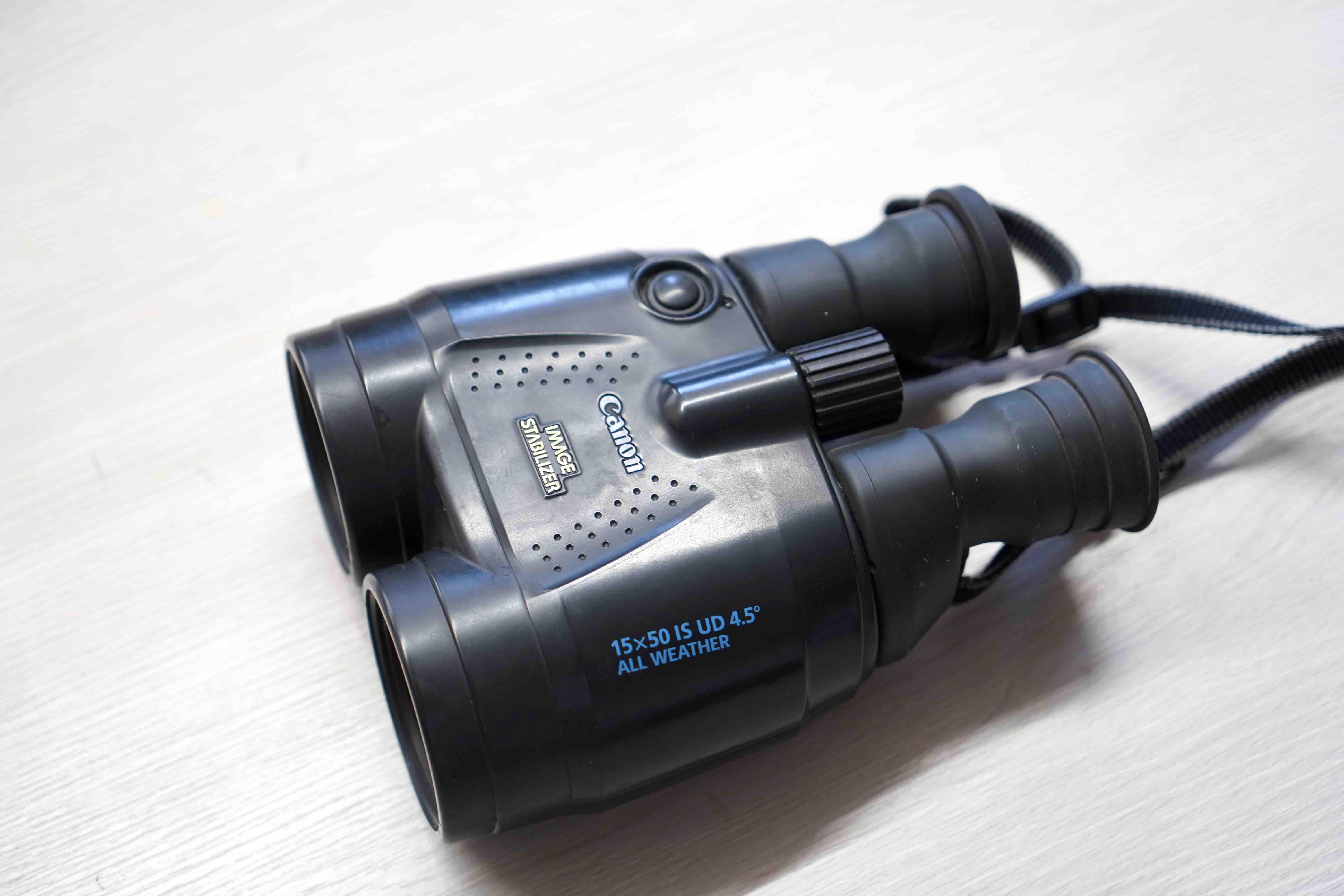
2) GPS is essential for surveys. I bought this when I received funding for research targeting sandpipers and plovers. The plover's nest is well concealed by the gravel, so even an experienced researcher can lose sight of it. Currently, I am conducting research in multiple areas, and it is difficult to go to distant research sites many times. If you do not record the nest you have found with accurate GPS, you may never be able to reach the nest you found. It is sometimes said that it is better to put a mark near the nest, but if you make a mark around the nest, clever animals such as foxes and crows will see and eat the chicks or eggs. Markings may make the nest vulnerable. If you record it with a GPS, you do not need to put a mark so you can rest assured.

3) I like this teaspoon I use when I drinking tea in the laboratory. The paint pattern on the handle is characteristic called the Tsugaru lacquer. I used to work as a postdoc at Hirosaki University in Aomori Prefecture. I was given this gift as a farewell present by a friend in Aomori when I learned I got my current job at Shinshu University. I take great care of it.
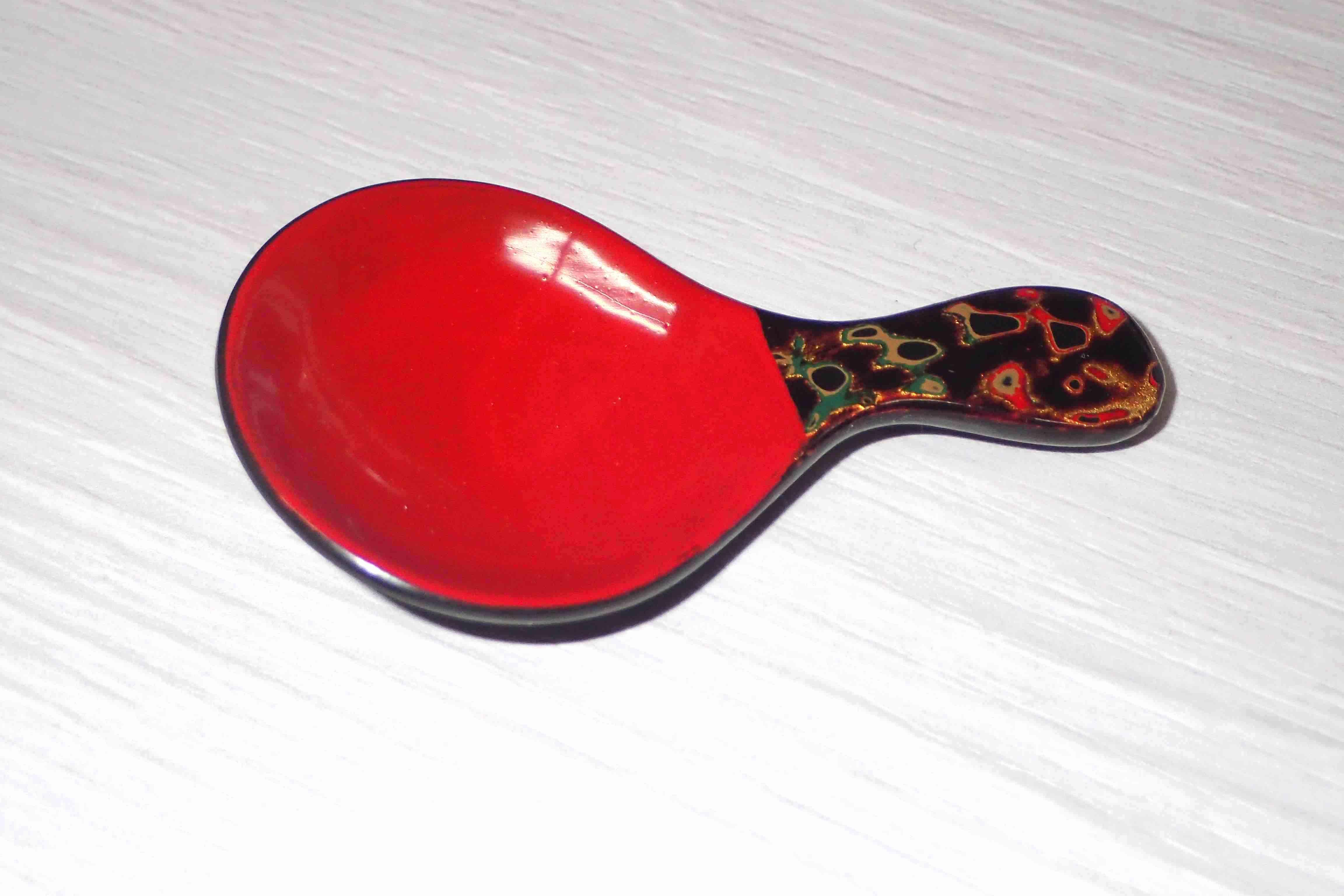
Scientific Reports: Rice fields along the East Asian-Australasian flyway are important habitats for an inland wader's migration
https://www.nature.com/articles/s41598-020-60141-z
Research activities: https://soar-rd.shinshu-u.ac.jp/profile/ja.WVLNOakh.html
